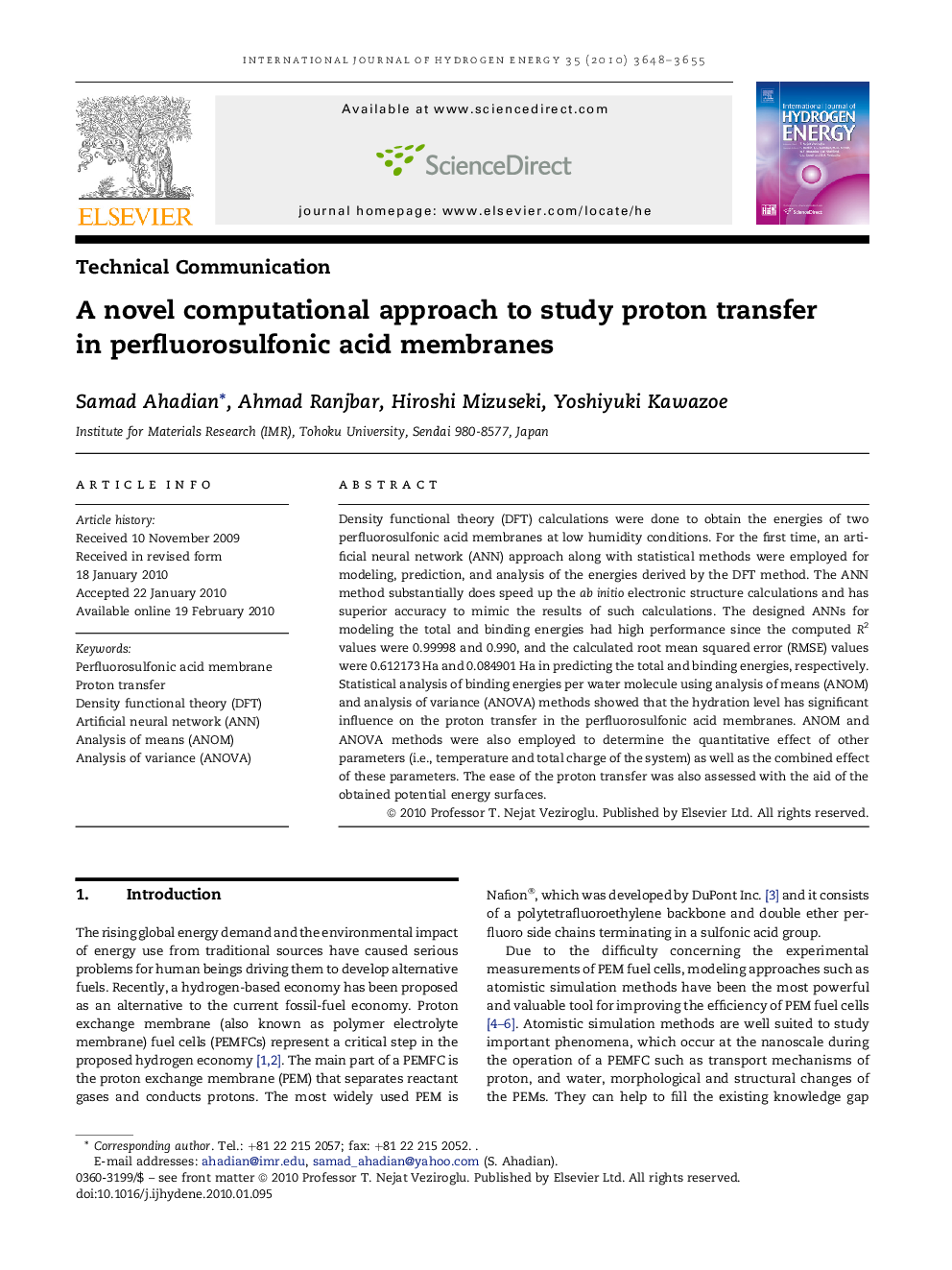| Article ID | Journal | Published Year | Pages | File Type |
|---|---|---|---|---|
| 1282922 | International Journal of Hydrogen Energy | 2010 | 8 Pages |
Density functional theory (DFT) calculations were done to obtain the energies of two perfluorosulfonic acid membranes at low humidity conditions. For the first time, an artificial neural network (ANN) approach along with statistical methods were employed for modeling, prediction, and analysis of the energies derived by the DFT method. The ANN method substantially does speed up the ab initio electronic structure calculations and has superior accuracy to mimic the results of such calculations. The designed ANNs for modeling the total and binding energies had high performance since the computed R2 values were 0.99998 and 0.990, and the calculated root mean squared error (RMSE) values were 0.612173 Ha and 0.084901 Ha in predicting the total and binding energies, respectively. Statistical analysis of binding energies per water molecule using analysis of means (ANOM) and analysis of variance (ANOVA) methods showed that the hydration level has significant influence on the proton transfer in the perfluorosulfonic acid membranes. ANOM and ANOVA methods were also employed to determine the quantitative effect of other parameters (i.e., temperature and total charge of the system) as well as the combined effect of these parameters. The ease of the proton transfer was also assessed with the aid of the obtained potential energy surfaces.
